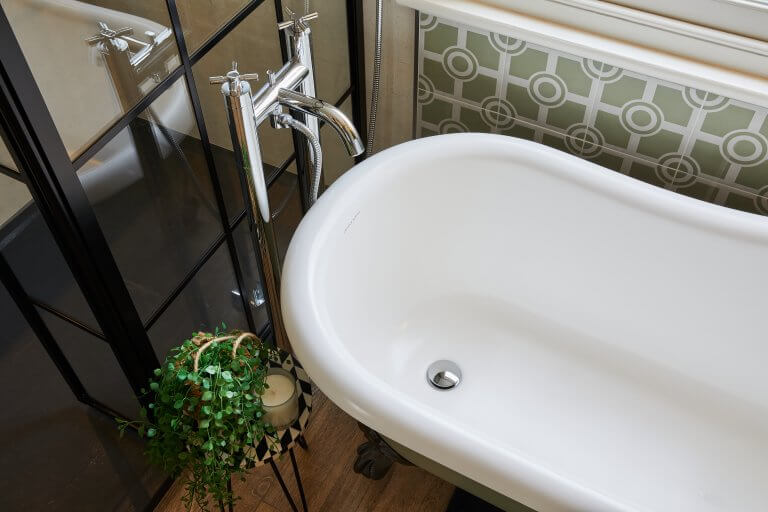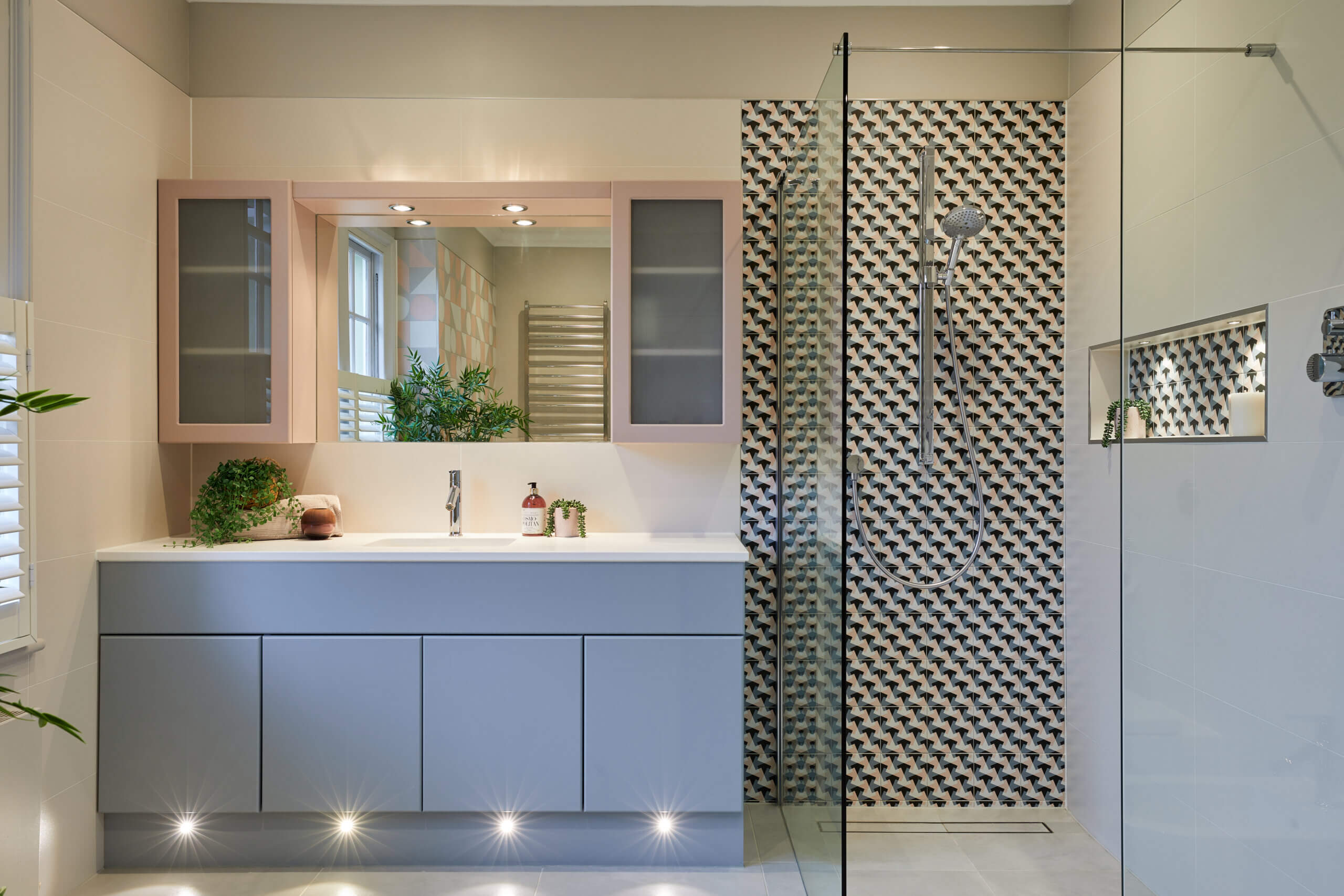We were asked by journalist and author, Jo Simmons, to contribute to her Houzz article on hiring a bathroom designer. Read on for her piece.
We use our bathrooms multiple times a day. When well designed, this busy space can send us off to work feeling washed, groomed and ready, and also help us unwind after a long day. It has to look great – ideally fitting in with your home’s overall aesthetic – work for young and old, and be super-practical, too; stuttering showers, uncomfortable baths and too-small basins are not welcome.
A great bathroom designer can cover all these wants and needs. As part of our Getting Started guide to planning a bathroom renovation, we asked three experts to share a rundown of exactly what they do.
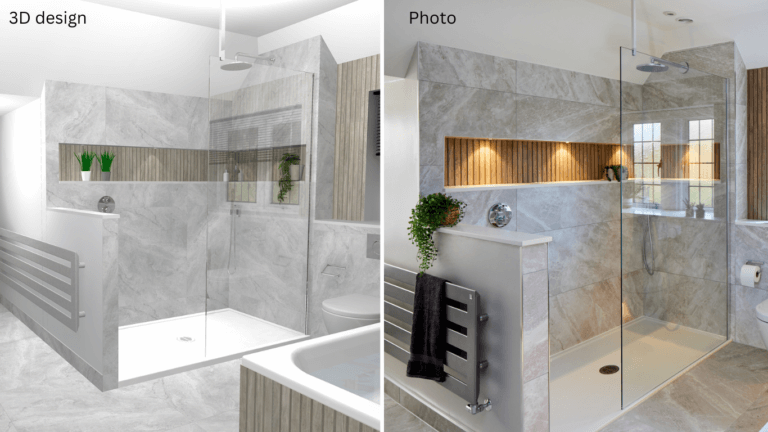
Why would I need to hire a bathroom designer?
There’s a lot involved when it comes to designing a bathroom, so it’s worth finding an expert to ensure aesthetic choices fit practically into the space and all the plumbing, fixtures and surfaces are functional.
Justine Bullock explains that bathroom designers have to have both technical and creative skills to make sure the client achieves a better space than they would if they’d carried out the project alone.
“I have to merge both technical and aesthetic considerations and, of course, work within a client’s budget,” agrees Steve Root, who says a good designer will take the time to balance price, performance and aesthetics when choosing elements for the room.
“Bathrooms are incredibly technical and we’ve moved far beyond the days of simply purchasing a three-piece suite,” Adam Wollerton says. He explains that the room needs to function for everyone in the family and match your home and lifestyle, while at the same time working within technical limitations such as waste connections.
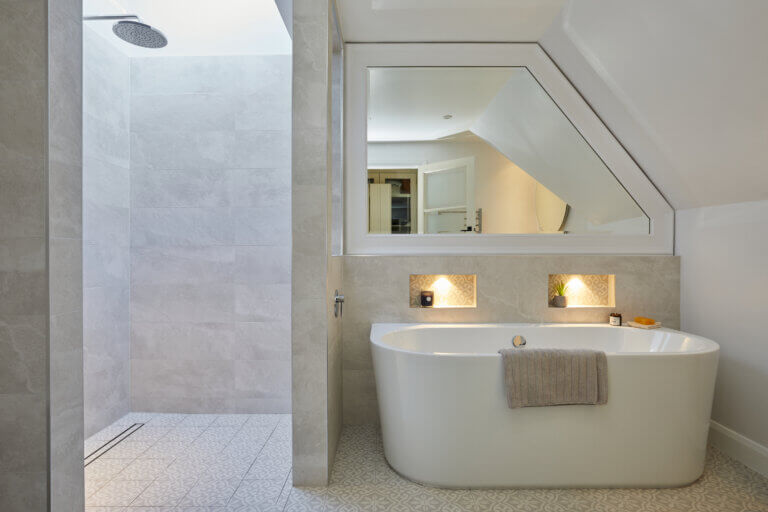
What are the benefits of hiring a bathroom designer rather than, say, a plumber?
Steve explains that a bathroom is more than just plumbing. “A great bathroom combines layout, materials and different trades to make your ideal space,” he says. While a plumber is essential, often a carpenter, plasterer, electrician, decorator and tiler are also employed.
A bathroom designer will also consider every last detail. “[They’ll assess] how long the product will last, to how easy it will be to fit, how eco-friendly the raw materials are, how straightforward it will be to get parts in 15 years, and whether it’s nice to use, looks great and is well-priced,” Steve says.
Another benefit of using a designer over simply a plumber or other tradesperson is finding out about new products and innovations. “As designers, we’re always seeing new and exciting concepts and products,” Adam says. “Sometimes we’ll present ideas for design features that you never knew existed, but [would] enhance your space dramatically.”
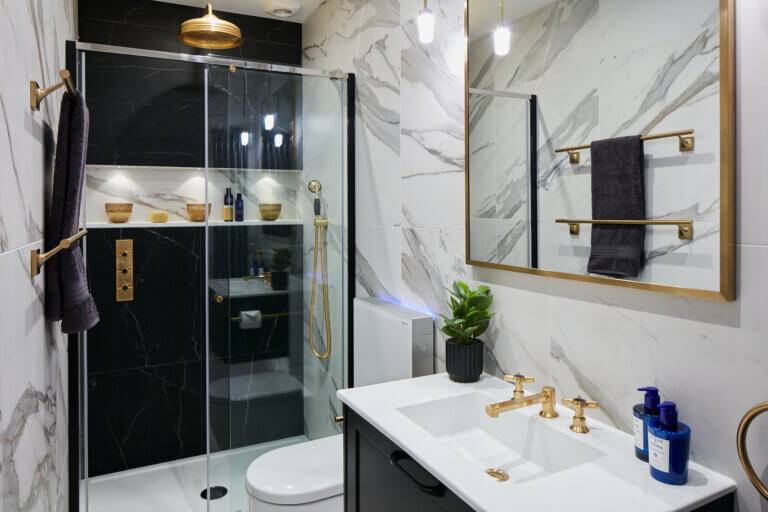
What does a bathroom designer do?
Researching, sourcing and collating products are just some of the tasks involved in designing a bathroom, according to Adam, as well as creating moodboards and tailoring concepts to a client’s brief.
In addition, the designer has lots of conversations with the various trades to ensure accuracy in the design. “When you hire a bathroom designer, you also get their brilliant installation teams, and all the work is project-managed in-house,” Adam says. “Plus, we have the technical know-how to ensure items or parts aren’t omitted from your order and can guide you on what is technically possible in the space, keeping the process as hassle-free as possible.”
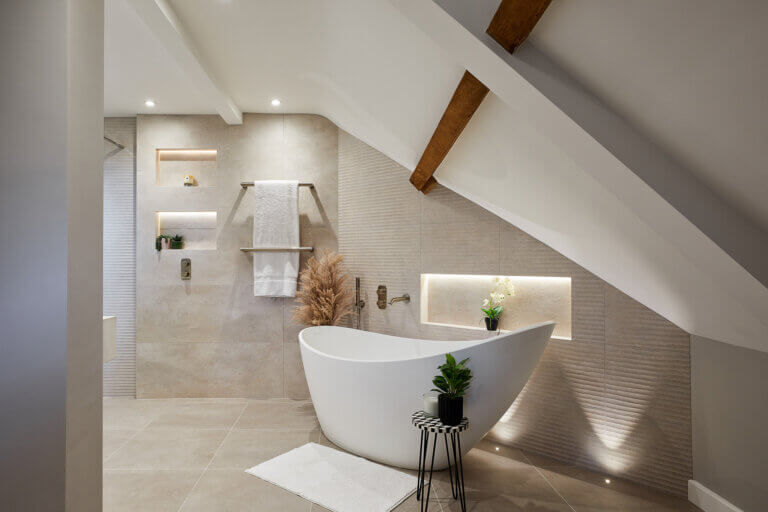
What’s involved in the initial consultation?
All good bathroom designers will spend time listening to your ideas and drawing up detailed plans before going ahead.
“There should be a consultation process first,” Justine says. “Then the designer will produce a design based on the best possible layout (not on what the room is currently like) and show you a range of products and tiles that are the best quality for your budget. They should also have 2D and 3D software to show you how the bathroom will look before you go ahead with anything.”
Some designers start with a showroom tour. “That’s so we can cover what we do and what we don’t do, and show typical products,” Steve says. “Then there’s the initial consultation, with a designer visiting your home and measuring the room, which lasts about an hour.”
He explains that the professional will then create the design, sometimes producing two or three layouts, always priced with particular products and price ranges. “A shower valve, for instance, commonly varies between £400 and £2,000. Both get you wet,” he says. “Which one is right for you might also be a function of which bath you choose and how much budget is left.”
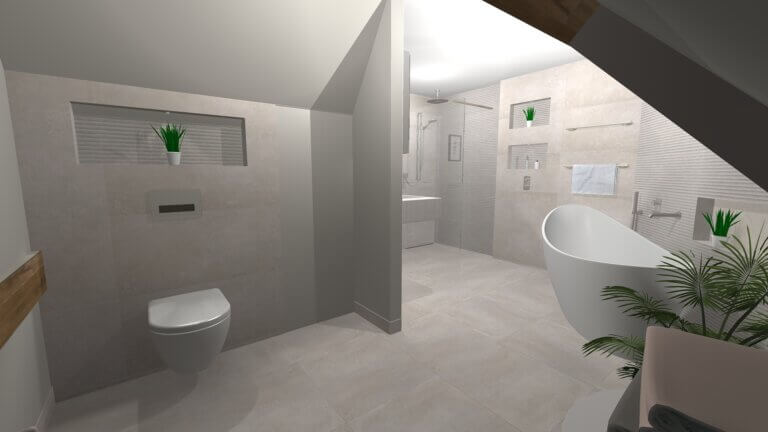
What happens next?
“We’ll do multiple revisions of the initial plan for the bathroom until everything is chosen and a complete room can be ordered,” Steve says. “Time-wise, some clients go from designer visit to ready to order in three weeks, but that’s rare. Typically, a client takes four months to choose everything. It has to be right first time, so time invested at the choosing stage is always well spent.”
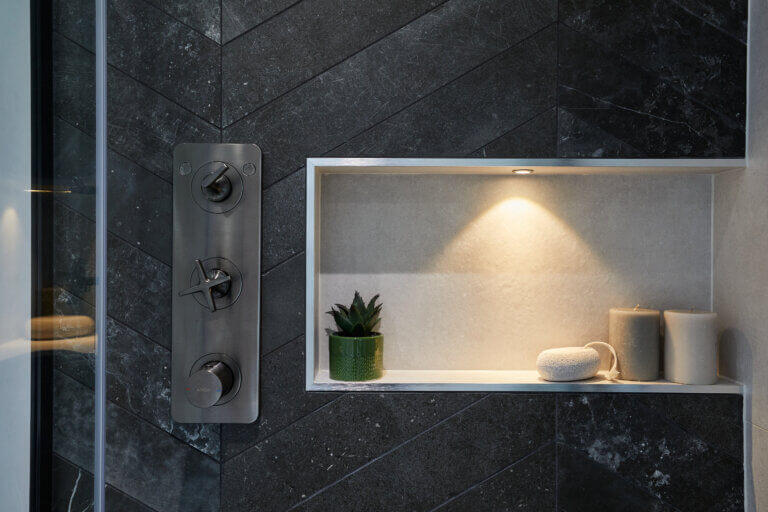
How are projects priced?
This can vary. Some bathroom designers offer an all-in-one service and price projects solely based on the design. “The more complex a space is, the more investment is required to create it,” Adam says.
Other designers offer a fully itemised pricing scheme that’s updated as the design is refined. “We’ll price different shower valves early, so clients can see the difference in price as well as the performance pros and cons,” Steve says. “As the design develops, we can start to assign more realistic estimates.”
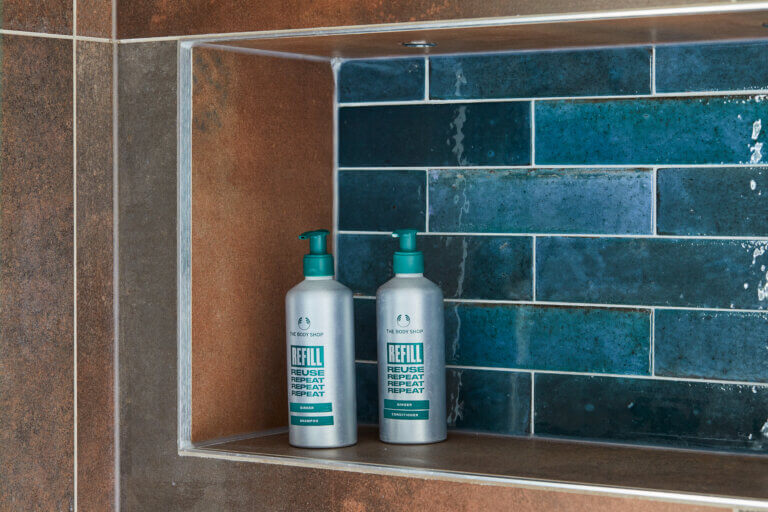
Can I hire a bathroom designer for a lower-budget or smaller space?
Most bathroom designers will be happy to take on any project. “Personally, as much as a large space is fun to work on, I love the challenge of a ‘normal’-sized or more compact room,” Adam says. “Some design schemes really come to life in a smaller bathroom.”
Justine recommends looking at the designer’s website and social media to check what types of projects they typically work on. “If all you see is high-end luxury projects, the chances are they operate in a niche. If you see a lot of projects that look more budget-friendly, then give them a call and ask what price their bathrooms typically start at. You’d be surprised – most bathroom design companies operate predominantly in the mid-range market.”

Can using a bathroom designer save you money in the long run?
Justine believes it can. “You won’t make any costly mistakes, forget to buy anything, or miscalculate quantities,” she says. “I know people who’ve done their own bathrooms thinking it would save them thousands by sourcing everything themselves and project managing, only to add up the bills at the end to see it saved possibly only hundreds.
“Not only that, they made mistakes along the way and had to find the time and tradespeople themselves, which in hindsight wasn’t worth the effort,” she adds.
A designer can also save you money into the future. “We know the products that are excellent quality and long-lasting with good warranties and aftercare, whereas you might choose something from an obscure brand with no after-sales service,” Justine says. “So if it fails down the line, you’ll have to replace it and may not have any support from the brand or place of purchase.”
Adam agrees. “A good designer will ensure that all the details are set before the work starts. This means less hassle throughout the installation, and no grey areas on what’s been agreed or costs involved in changing things during the process. It also avoids the likelihood you’ll want to change something once the room’s completed, which would incur further costs.”
